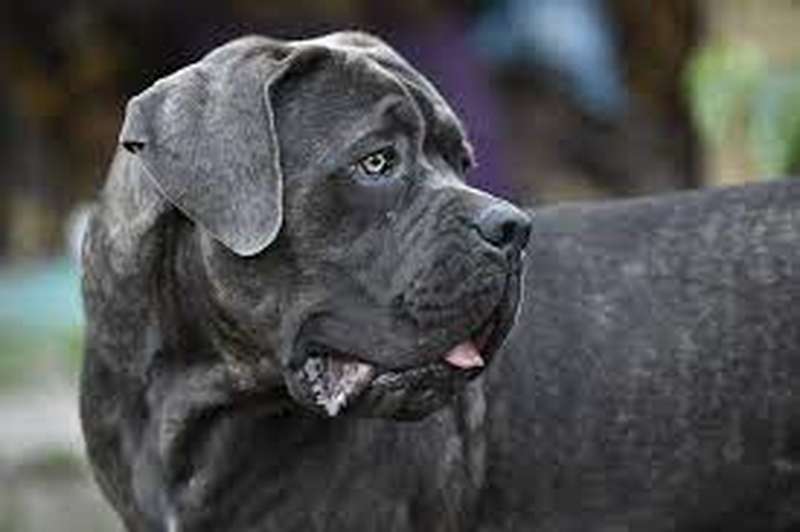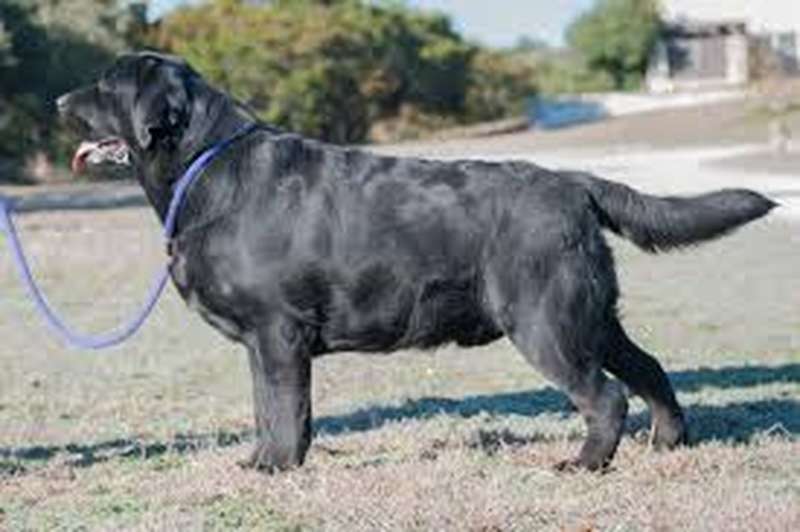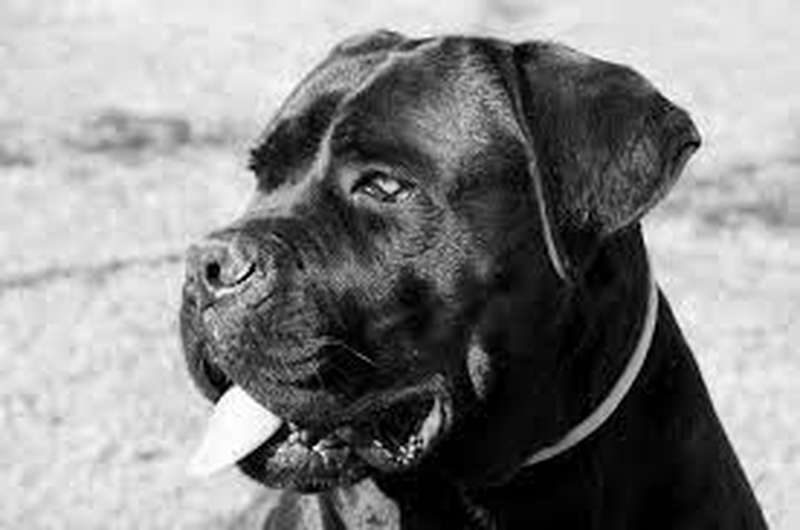Italian mastiff breed Cane Corso. The dog is kept as a friend, guard, and livestock protector. It used to hunt big game and herd livestock.

Breed data
This table provides statistics and other facts about the Cane Corso.
| vital statistics | breed facts |
|---|---|
| other names | Cane Corso Italiano; Cane Corso Mastiff |
| area of origin | ancient Rome |
| breed group | working (AKC); Pinscher and Schnauzer—Molossoid and Swiss Mountain and Cattledogs (FCI) |
| height at withers | 23–28 inches (58–71 cm) |
| weight | 90–110 pounds (41–50 kg) |
| life span | 9–12 years |
| Did you know? | Although the Cane Corso’s lineage traces back to ancient Rome, it was recognized by the AKC and FCI only in the 21st century; the dog was little known outside of Italy prior to the 1980s. The breed’s name can be translated from Latin as “bodyguard dog” or “guard dog of the courtyard.” Corsi often appears in the illustrations of Bartolomeo Pinelli (1781–1835). |
Weight and Growth Chart for Cane Corso

With a weight of over 100 pounds, it is not remarkable that the “bodyguard-dog,” the Cane Corso, was regarded as one of Rome’s most fearless guardians. Cane Corsos are an ancient, large dog breed with origins dating back to the Roman era. There, they served as guard dogs, protecting their owners from potential attackers.
The Cane Corso is renowned for its devotion and intensity, so he can be quite intimidating. Their large, muscular bodies and loud barking serve as an alarm system to deter the majority of intruders. When combined with extreme human loyalty, these canines can be formidable family protectors.
In order to help you comprehend how your Cane Corso puppy is growing and maturing, we’ve created a growth chart. Our Cane Corso size charts can help pet owners determine how much space their dog will require as he or she matures.
Male Cane Corso Size Chart
| Age | Weight |
|---|---|
| One month | 20 – 28 lbs |
| Two months | 30 – 36 lbs |
| Three months | 35 – 40 lbs |
| Four months | 42 – 46 lbs |
| Five months | 48 – 55 lbs |
| Six months | 60 – 65 lbs |
| Seven months | 65 – 70 lbs |
| Eight months | 70 – 80 lbs |
| Nine months | 80 – 90 lbs |
| Ten months | 85 – 95 lbs |
| 11 months | 90 – 100 lbs |
| One year | 90 – 105 lbs |
| Two years | 99 – 110 lbs |
Female Cane Corso Size Chart
| Age | Weight |
|---|---|
| One month | 16 – 25 lbs |
| Two months | 26 – 32 lbs |
| Three months | 30 – 37 lbs |
| Four months | 36 – 43 lbs |
| Five months | 42 – 50 lbs |
| Six months | 55 – 60 lbs |
| Seven months | 60 – 65 lbs |
| Eight months | 65 – 72 lbs |
| Nine months | 68 – 75 lbs |
| Ten months | 75 – 82 lbs |
| 11 months | 80 – 90 lbs |
| One year | 85 – 95 lbs |
| Two years | 88 – 99 lbs |
When does a Cane Corso reach maturity?
The majority of Cane Corsos will achieve their full adult height by the age of one, but some may take up to two years to reach their full adult weight and chest size. These large, working dogs require more time than smaller breeds to attain their full size.
The maximum height of a Cane Corso is an impressive 27.5 inches. Typically, they attain their adult height between the ages of one and two.
What size does a 6-month-old Cane Corso need to be?
At six months of age, the majority of Cane Corsos will measure between 21 and 24 inches in height. Male offspring will weigh approximately 60 to 65 pounds, while female Cane Corsos of the same age will be slightly lighter at 55 to 60 pounds.
Cane Corsos commonly face various health concerns.
Cane Corsos, similar to any other dog breed, may be susceptible to specific health problems. They are more susceptible to the following problems due to their unique physical features and genetic predispositions.
Hip dysplasia
What is it?: It is a genetic health condition characterized by improper development of the hip joint, resulting in pain and difficulties with mobility.
Common signs of a leg injury include limping or favoring one leg, decreased mobility, and difficulty with standing up and lying down.
Bloat
What is it?: Gastric dilation-volvulus (GDV), also known as, is a potentially life-threatening condition. It occurs when the stomach becomes filled with gas, fluid, or food and subsequently twists on itself, causing a blockage at the entrance and exit.
The twisting of the organs prevents proper blood flow to the stomach and other vital organs. This lack of blood flow can lead to tissue death and the release of toxins into the bloodstream.
Bloat is a medical emergency that necessitates prompt veterinary attention.
Common signs of this condition include abdominal distension, restlessness, unproductive vomiting, and signs of shock.
Cherry eye
What is it? When the tear gland in the eye becomes swollen and protrudes from the inner corner, it resembles a cherry. Cherry eye can occur due to genetic factors, trauma, or inflammation in the eye.
Common signs of eye irritation include a red and swollen mass in the corner of the eye, excessive tearing, and frequent rubbing or scratching of the eye. The eye that is affected may also seem irritated, and your dog may display signs of discomfort or pain.
How can I ensure the health of my Cane Corso?
Preventive care is generally more advantageous than treatment.
To help your Cane Corso avoid or minimize many health issues, it is important to prioritize preventive care. This includes early screenings, regular veterinary exams, and following the recommended diet and exercise guidelines.
Similar to other purebred animals, Cane Corsos have a higher likelihood of experiencing certain genetic health issues. The breed is particularly prone to canine hip dysplasia, a condition that can result in degenerative joint disease and osteoarthritis.
Your veterinarian is the best person to consult when it comes to selecting the right diet and exercise plan for your dog, in order to prevent weight gain and potential health issues.
Cane Corsos are also susceptible to seizure disorders, specifically idiopathic epilepsy, which is a condition characterized by seizures of unknown origin. Veterinarians diagnose idiopathic epilepsy and prescribe medication for its treatment.
Regular veterinary care is essential for preventing and treating a wide range of health issues, including dental disease and cancer.
However, the cost of treatments and surgery for pets can often amount to thousands of dollars, which can create financial difficulties for many pet owners.
According to a survey, a mere 19.44% of pet parents stated that they would have the means to pay for a $5,000 veterinarian bill. This highlights the significance of having pet insurance.
Pet insurance operates by providing reimbursement for up to 90% of your out-of-pocket veterinary expenses. This coverage serves as a safety net in case an unfortunate event occurs involving your pet. Similar to humans, dogs are experiencing longer lifespans.
As a result, it is becoming increasingly important to ensure that your furry companion receives regular veterinary care in order to maintain optimal health and overall well-being.
How much does a Cane Corso price?

The price range for a purebred Cane Corso from a reputable breeder typically falls between $1,500 and $4,000. For coat colors that are less common, you can anticipate prices ranging from $2,000 to $5,000 or even higher.
The overall cost of owning a Cane Corso can vary greatly throughout their lifetime, depending on factors such as their health, grooming requirements, and general lifestyle.
Here is an estimate of the expenses you can anticipate throughout the lifespan of a Cane Corso, which usually spans from 9 to 12 years:
- The initial costs associated with owning a cane corso puppy include the price of the cane corso puppy itself, vaccinations, spaying or neutering, microchipping, and purchasing necessary supplies. These costs typically range from $2,000 to $6,000, although rare colors or patterns may result in higher expenses.
- The average annual expenditure on food ranges from $500 to $1,000.
- The annual cost of veterinary care, which includes check-ups, vaccinations, and prevention for fleas, ticks, and heartworm, typically ranges from $300 to $1,000 per year.
- The cost for grooming, which includes nail trimming, baths, and occasional professional grooming, is $100 per year.
- Pet insurance is available for your Cane Corso and the cost can vary. However, it is generally more affordable if you enroll your pet at a younger age.
- The cost for training classes is $75-300 per class, and private sessions are also available.
- For boarding or pet-sitting services, the cost is $20-100 per day. If you require services for an extended period, we can negotiate rates.
- The annual cost of miscellaneous expenses, such as toys, treats, fancy shoes, bedding, and other items, ranges from $500 to $1,200.
Why are Cane Corsos so expensive?
There are several reasons why owning a Cane Corso can be expensive. For example:
Rarity
Cane Corsos are relatively less common compared to some other breeds, which can result in a higher price for them.
Health testing is an important aspect of maintaining overall well-being.
Responsible breeders frequently conduct health tests on their dogs to ensure the production of healthy puppies. Health tests can often come with a high price tag, which is typically transferred to the purchaser.
The costs associated with breeding
Breeding Cane Corsos can pose challenges, and responsible breeders typically devote substantial time, effort, and financial resources to the breeding and upbringing of their puppies. This can lead to an increase in the cost of the puppies.
Quality Showcase
Certain Cane Corsos are specifically bred for show or competition purposes, necessitating a more advanced level of breeding and training. These dogs can be pricier because of their show-quality characteristics.
Demand
The popularity of Cane Corsos has been on the rise in recent years, resulting in an increase in their price due to the high demand.